
About UsThe Numismatic Bibliomania Society is a non-profit organization promoting numismatic literature. For more information please see our web site at coinbooks.org SubscriptionsThose wishing to become new E-Sylum subscribers (or wishing to Unsubscribe) can go to the following web page link MembershipThere is a membership application available on the web site Membership Application To join, print the application and return it with your check to the address printed on the application. Membership is only $15 to addresses in the U.S., $20 for First Class mail, and $25 elsewhere. For those without web access, write to: David M. Sundman, Secretary/TreasurerNumismatic Bibliomania
Society AsylumFor Asylum mailing address changes and other membership questions, contact David at this email address: dsundman@LittletonCoin.com SubmissionsTo submit items for publication in The E-Sylum, just Reply to this message, or write to the Editor at this address: whomren@coinlibrary.com
BUY THE BOOK BEFORE THE COINYou won't regret it! |
- WAYNE'S WORDS: THE E-SYLUM OCTOBER 7, 2012
- KÜNKER OFFERS NUMISMATIC LITERATURE AUCTION NOVEMBER 7-8, 2012
- NEW BOOK: THE MODERN COINAGE OF CHINA 1866-1949
- NEW BOOK: GUIDE BOOK OF UNITED STATES COINS, PROFESSIONAL EDITION, 4TH ED.
- REVIEWER SOUGHT FOR AMERICAN SILVER EAGLES GUIDE BOOK
- BANK NOTES OF THE OTTOMAN EMPIRE WINS IBNS AWARD
- USMINTRESEARCH.COM SITE CREATED
- MORE ON DOMESTIC AND FOREIGN COINS FROM U.S. MINTS
- MORE ON WASHINGTON BEFORE BOSTON MEDAL VARIETIES
- MINIATURE AND POCKET-SIZED NUMISMATIC LITERATURE NOW ONLINE
- NOTES FROM E-SYLUM READERS: OCTOBER 7, 2012
- MAMMOTH CATALOGING PROJECT OF MEDAL-OF-VALOR WINNERS
- ARTICLE PROFILES MINT DIRECTOR NOMINEE BIBIANA BOERIO
- QUERY: HOW WAS THIS CENTENNIAL EXHIBITION AWARD MEDAL MADE?
- BROOKGREEN GARDENS FOUNDERS MEDAL
- READER THOUGHTS ON DEMONETIZATION
- X-RAY FLUORESCENCE SPECTROSCOPY FOR DETERMINING COIN COMPOSITION
- QUERY: HAS ANYONE SEEN THIS LIBERTY HEAD DESIGN?
- QUERY: COUNTERMARKED 1791 WASHINGTON CENT IN HARZFELD'S SIXTH SALE
- THE WINICK COLLECTION OF MECHANICAL BANKS
- BONNIE AND CLYDE MORGAN DOLLAR BRINGS $32,400
- ALASKA NATIONAL BANK NOTE MAKES HEADLINES
- ARTICLE ON THE FAIRBANKS LOCKSMITH NATIONAL BANK NOTE THEFTS
- GEORGE III COPPERS WASHING UP ON DELAWARE'S MONEY BEACH
- HOWARD DANIEL'S NUMISMATIC DIARY: OCTOBER 7, 2012
- MORE ON THE HO HI WHANG TOKEN MYSTERY
- FEATURED WEB SITE: ORIENTAL NUMISMATIC SOCIETY
WAYNE'S WORDS: THE E-SYLUM OCTOBER 7, 2012

No new subscribers this week. We have 1,595 email subscribers, plus 190 followers on Facebook (the 199 reported last week was a typo).
Harvey Stack, Jim Duncan and Michael J. Sullivan all reported not receiving their e-mail edition of The E-Sylum last week. Sorry! I'm not sure what happened - I confirmed that their addresses are all still on our list.
This week we open with a numismatic literature sale from Europe and announcements of two new books. Other topics include a web site for early U.S. Mint research, the Washington before Boston medals, a countermarked 1791 Washington cent, Brookgreen Gardens, and Alaska National Bank Notes.
To learn more about the nominee for Director of the U.S. Mint, demonetization, X-ray fluorescence spectroscopy, shootin, lynchin and hangin, Clyde Barrow's silver dollar, and a most melancholy catastrophe, read on. Have a great week, everyone!
Wayne Homren
Editor, The E-Sylum
KÜNKER OFFERS NUMISMATIC LITERATURE AUCTION NOVEMBER 7-8, 2012
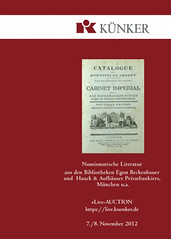 Our eLive Auction 12 offers something very special for you in the coming months of October and November: an auction of numismatic literature.
Our eLive Auction 12 offers something very special for you in the coming months of October and November: an auction of numismatic literature.
The 1,600 numbered catalog items comprise monographs; commemorative publications; magazine series and auction catalogs, partly from the libraries E. Beckenbauer and F. Weitzinger of Munich; 75 bibliophile works including “Appel’s Repertorium zur Münzkunde”; (“Appel’s Archive Register on Coin Science”) of 1820/1822 and 1824/1829; “Des Teutschen Reichs Münz-Archiv” (“Coin Archive of the German Empire”) by Hirsch from 1756/1768; a complete series of “Kohlers Historischen Münzbelustigungen” (“Kohler’s Historical Coin Amusements”) parts 1-22,1729/1750 and 1764/1765, in superb condition; a series of van Loon’s “Beschryving der Nederlandsche Historipenningen” from the Netherlands ; J.G.Lori’s “Sammlung des baierischen Münzrechts” (“Collection of old Bavarian Coin Minting Permits”) ; as well as the extremely rare volumes “Monnaies en or” and “Monnaies d’argent” (“Gold Coins”, “Silver Coins”).
In addition , at the eLive Auction 12 you will find 1000 monographs, essays and special edition publications on ancient and modern numismatics with many standard works, but also rare and sought-after monographs. The emphasis here is on books of ancient and German numismatics.
Among the journals which are also on offer are, furthermore, two rarities: the complete series of “REVUE BELGE DE NUMISMATIQUE ET DE SIGILLOGRAPHIE” (“Belgian Review of Numismatics and Document Seals Study”), volumes 1-148, 1842-2002, as well as the complete series of “REVUE NUMISMATIQUE”, 1836-2009.
The conclusion of the auction consists of 320 auction catalogs, many in impeccably preserved condition and bound fully in linen.
For this special eLive Auction there will once again be a printed catalog.
Fax: +49 (0) 541 96 20 222 Phone: +49 (0) 541 96 20 20 Email: service@kuenker.de
To access the catalog, see: /www.kuenker.de/templates/Images/muenzen/katalogauktion/ela12.pdf
To read the complete article, see: www.elive-auction.com
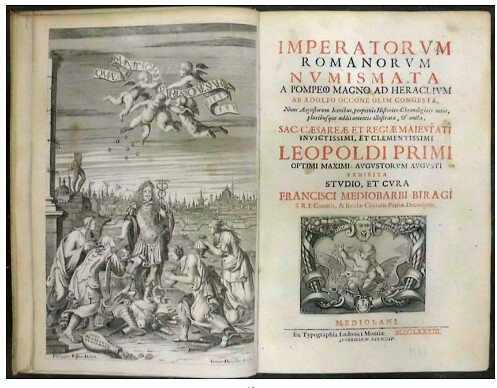
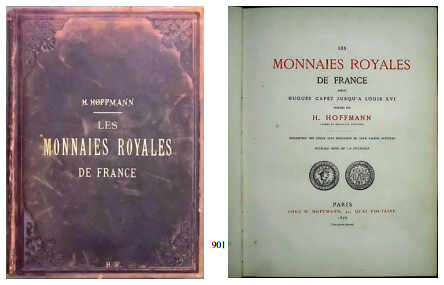
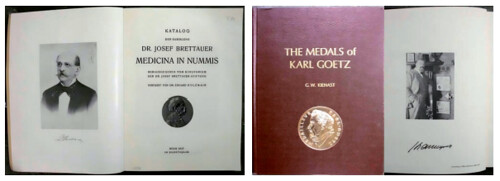
NEW BOOK: THE MODERN COINAGE OF CHINA 1866-1949
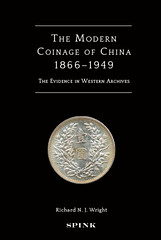 The opening of the new Canton (Guangdong) mint in May 1889 to mass produce coins using British made machinery marked the beginning of a revolution in industrial processes in China. The collected papers in this volume create together an account of how within fifteen years machine-made coins were in production at mints spread throughout China, and how within twenty five years the new coins had replaced the traditional coinage system which had served China for the previous two millennia. The use of machine made coins predated the establishment of the Canton mint as imported Spanish and later Mexican dollars had circulated widely in coastal regions since the sixteenth century.
The opening of the new Canton (Guangdong) mint in May 1889 to mass produce coins using British made machinery marked the beginning of a revolution in industrial processes in China. The collected papers in this volume create together an account of how within fifteen years machine-made coins were in production at mints spread throughout China, and how within twenty five years the new coins had replaced the traditional coinage system which had served China for the previous two millennia. The use of machine made coins predated the establishment of the Canton mint as imported Spanish and later Mexican dollars had circulated widely in coastal regions since the sixteenth century.
Although the Chinese imperial authorities allowed these foreign coins to circulate, they strongly resisted the adoption of such coins for their own coinage system. In the 1860s Britain tried unsuccessfully to persuade China to change this situation by offering to produce a new machine made silver coinage at its mint on the island of Hong Kong. It was, however, the circulation into southern China of coins made in the Royal Mint in London for use within Hong Kong which eventually convinced the provincial government in Guangdong that there were practical advantages in issuing their own machine-made coins.
The many narratives presented in this volume document the establishment of mechanised mints and their issue of new coins from the opening of the Canton mint until the establishment of the Renminbi (People’s currency) in the early years of the People’s Republic of China. In doing so they also illustrate the dramatic political history of China from the western interference during the last decades of the failing Qing Empire, through the establishment of the new Republic by Sun Zhongshan (Sun Yat-sen) in 1912, its collapse into regional warlordism, the attempted reestablishment of the Republic under the Guomindang and the Japanese invasion until the eventual establishment of the People’s Republic in 1949. As well as being a story of political change, it is also a record of the provision of Western technology and expertise to China as it emerged from the authoritarian conservatism of the Qing imperial state into a modernised industrial nation.
This volume presents the collected research papers of Richard Wright, drawing them together from the various journals in which they were originally published between 1974 and 2003 into a newly set version. The articles have been standardised, replacing the differing formats of those appearing in the Numismatic Chronicle, the Numismatic Circular, and rescuing the rest from the relative obscurity of the more difficult to find publications in which some of them appeared. To the thirty seven articles are added another published here for the first time. Four appendices draw together additional material, and a fifth publishes Richard’s last revision of his article on the British medals commemorating the Keying Junk, a maritime marvel of the 1840s.
Richard’s achievement in these articles and now in this volume is a remarkable example of the quality of numismatic research contributed by collectors. He follows a long tradition of the process of collecting developing into a curiosity no longer satisfied by the available reference work. Building on the work of Kalgan Shih, Eduard Kann and Tracey Woodward, all like him collector scholars, he was able to focus on sources largely unavailable to them to expand and often correct their understandings. Although since the establishment of the People’s Republic Chinese research on China’s modern coins has continued the investigation of the coins and sources, Richard’s contribution has been to bring into focus the wealth of information available in British archives and collections. These sources have been particularly rich in new information and new understandings.
I was privileged, early in my career, to see Richard in action as he turned to the British Museum collections in search of clues. From the early 1970s I helped him in a small way in showing him the date and source of acquisitions of Chinese machine made coins, and commenting on aspects of the designs which had occurred to me as I went through the collection matching them to Kann’s catalogue. With pleasure I saw the fruits of his diligent research as he published article after article. As he came towards the end of his focus on Chinese coins I asked him about the possibility of publishing all his articles in one volume. I am embarrassed to say that after getting his agreement to the suggestion other tasks took me away from the possibility. I am delighted that Helen Wang has now taken up this idea and with further help from Richard and the generous support of Philip Skingley at Spinks, this volume has now been completed. It will make the immense value of Richard’s contributions to the study of the modernisation of China’s coinage more visible and more available to the scholars of China’s modern history, numismatic scholars and coin collectors.
It is a pleasure to see this volume appearing in Richard’s eightieth year. It signals the recognition that is due to his outstanding contribution to Chinese numismatics. I congratulate him on what he has achieved and celebrate the advances he has made in creating an understanding of this fascinating period in China’s history.
For more information or to order, see: staging.spink.com/books-publications/book-description.aspx?id=67
NEW BOOK: GUIDE BOOK OF UNITED STATES COINS, PROFESSIONAL EDITION, 4TH ED.
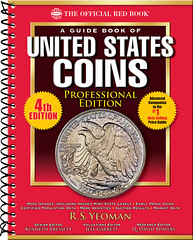 Whitman Publishing has released the fourth edition of its expanded version of the best-selling Guide Book of United States Coins (known within the hobby as the “Red Book”). The 384-page volume, called the Professional Edition, is intended for intermediate and advanced collectors, numismatic researchers, professional coin dealers, auctioneers, and investors. It is available online (including at Whitman.com), at bookstores nationwide, and from hobby dealers and booksellers.
Whitman Publishing has released the fourth edition of its expanded version of the best-selling Guide Book of United States Coins (known within the hobby as the “Red Book”). The 384-page volume, called the Professional Edition, is intended for intermediate and advanced collectors, numismatic researchers, professional coin dealers, auctioneers, and investors. It is available online (including at Whitman.com), at bookstores nationwide, and from hobby dealers and booksellers.
The Professional Edition is 45% larger than the regular-edition Red Book, at 8.5 x 11 inches, and is spiralbound for convenient reference. It retails for $29.95. Features of the Professional Edition include:
- Detailed coverage of every federal coin type, half cents through double eagles, plus classic commemoratives, Proof and Mint sets, and bullion coins.
- Expanded valuations, including multiple Mint State and Proof levels, plus Full Steps, Full Bands, Full Head, Full Bell Lines, Cameo / Deep Cameo, and other specialized designations.
- Certified-coin population summaries (PCGS and NGC) for every date and mintmark—including the number certified, the average grade, the percent in Mint State, and the finest Proof.
- Recent auction data for coins listed.
- Additional die varieties in every denomination, with close-up photographs for easy identification.
- High-quality, full-color photographs (more than 1,600 altogether) of Mint State and Proof coins, for every type.
- Detailed research, estimated mintages, and market information on early 1800s–early 1900s Proof coinage, including gold.
- Expert guidance on striking and sharpness characteristics for each type—valuable information when comparing coins for purchase.
- Insight on availability and condition rarity for each type.
- Detailed grading instructions, including for Mint State and Proof coins.
- Informative chart notes that expand on the history, characteristics, and market values of significant coins.
- Enlargements of key focal points and varieties—many more than in the regular edition.
- A section on the U.S. Mint’s silver, gold, and platinum bullion coins.
- An appendix on “Great Collectors and Collections of the Past.”
The Professional Edition’s editorial team consists of Senior Editor Kenneth Bressett, Research Editor Q. David Bowers, and Valuations Editor Jeff Garrett. Dozens of hobby leaders contributed their expertise to the book’s production.
“The first Professional Edition Red Book was published in 2009,” said Whitman publisher Dennis Tucker. “Over the years we’ve made useful improvements and additions. Innovations in the fourth edition include combined certified-coin population data from NGC and PCGS; a table of popular die varieties found in Proof and Mint sets; hundreds of new photographs; and updated chart notes based on the latest numismatic research.”
All of the book’s coin valuations, certified populations, and auction data have been reviewed and updated for the new fourth edition.
“The Red Book Professional Edition gives its users real-world market information on every coin ever struck by the U.S. Mint,” said Whitman president Mary Counts. “As a single-source reference book it has no comparison.”
A Guide Book of United States Coins, Professional Edition, fourth edition Senior editor Kenneth Bressett; research editor Q. David Bowers; valuations editor Jeff Garrett.
ISBN 0794837365
384 pages, full color.
8.5 x 11, spiralbound softcover.
Retail $29.95
REVIEWER SOUGHT FOR AMERICAN SILVER EAGLES GUIDE BOOK
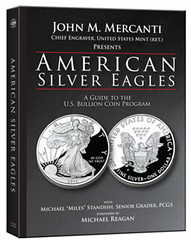 I have an advance advance copy of American Silver Eagles: A Guide to the U.S. Bullion Coin Program (our main shipment of advance media copies won’t go out for another week or two) that I’d like to offer to an E-Sylum reader who’s up for writing a book review.
I have an advance advance copy of American Silver Eagles: A Guide to the U.S. Bullion Coin Program (our main shipment of advance media copies won’t go out for another week or two) that I’d like to offer to an E-Sylum reader who’s up for writing a book review.
American Silver Eagles has generated more pre-publication excitement and interest within the hobby than any other title in my recent memory. Collectors obviously love their modern coins and bullion!
I can be contacted by potential reviewers at dennis.tucker@whitmanbooks.com.
To read the earlier E-Sylum article, see: NEW BOOK: AMERICAN SILVER EAGLES: A GUIDE TO THE U.S. BULLION COIN PROGRAM (www.coinbooks.org/esylum_v15n40a03.html)
BANK NOTES OF THE OTTOMAN EMPIRE WINS IBNS AWARD
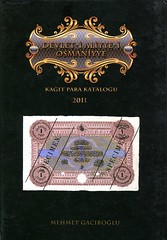 The International Bank Note Society has awarded its Book of the Year honors for a book published in 2011 to Devlet-I Aliyye-I Osmaniyye (“Bank Notes of the Ottoman Empire”) by Mehmet Gaciroglu.
The International Bank Note Society has awarded its Book of the Year honors for a book published in 2011 to Devlet-I Aliyye-I Osmaniyye (“Bank Notes of the Ottoman Empire”) by Mehmet Gaciroglu.
In presenting the award, the IBNS said, “Several reference works on the bank notes of the Ottoman Empire have been written in recent years, but the recently published, award-winning volume by Mehmet Gaciroglu is an impressive contribution to understanding paper money issues in the Ottoman Empire.”
For each denomination identified in the book, descriptions include the dates of issue, size of the note, the group of issue, signatures, quantity issued, seal used, serial number range and remarks.
Where bank notes are illustrated, watermark and signature varieties are adjacent to the bank note “which makes the identification of a banknote very easy for the reader.” Values for the notes are given in the grades Fine, VF, EF and UNC.
“Not just a catalogue, the book includes biographies of Sultans and descriptions of the seals used on the notes,” the IBNS said. “Towards the back of the book is a section with colour plates of specimens, essays, artist’s sketches, errors, endorsement stamps and cancellations. Included are the British Gallipoli notes, German legion issues, municipal currencies and local Hebrew, Armenian and Greek issues.”
To read the complete article, see: IBNS Names Its Book of the Year (www.numismaster.com/ta/numis/Article.jsp?ad=article&ArticleId=25804)
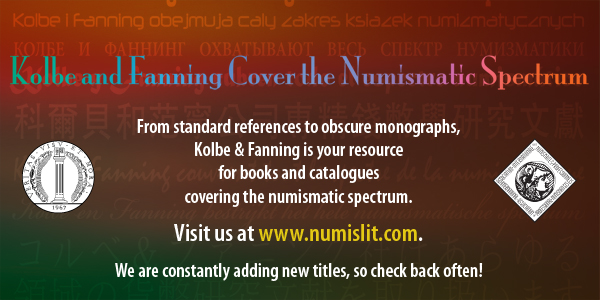
USMINTRESEARCH.COM SITE CREATED
A website has been created to serve as a message board and data repository for anything U S Mint research related. The website is www.USMintResearch.com. The website went live in August, 2012, and focuses on the First and Second United States Mints from 1792-1839, Mint personnel, policies, procedures and operations, research at the National Archives and other facilities, and U S coins prior to 1840. Why 1792-1839? This covers all U S coins struck after the Coinage Act of April 2, 1792 and prior to the Seated Liberty series. Eventually the website will be expanded to include the other Mints and additional series of U S coins.
Participants are encouraged to post documents, research, images, pictures, in-progress articles, and theories, and engage in discussions.
Access to the website is currently restricted. In order to gain access, you have to be invited. The website requires a secure login.
If you are performing research and want to participate, please send an email with your name and reason for joining to David Finkelstein at dfinkelstein@comcast.net .
MORE ON DOMESTIC AND FOREIGN COINS FROM U.S. MINTS
Eric von Klinger writes:
The Sept. 30 E-Sylum mentions two references on foreign coins manufactured by the U.S. Mint: an early 1960s monograph published by Whitman, and a Government Printing Office publication in various editions in the 1960s and '70s. Mention should also be made to "Foreign Coins Struck at Mints in the United States," by Philip Steiner and Michael Zimpfer. This book was published somewhat later and includes private mints. Another book, which I have not seen, is by Harry Scheerer (second edition, 1996). Perhaps another reader can supply further information.
The claim is sometimes made that the U.S. Mint struck the 1833 American Colonization Society coppers for Liberia, but this claim is probably in error. Congress first authorized the Mint to accept foreign coinage contracts in an act of 1874. The first undisputed foreign coinage by the U.S. Mint consisted of 1- and 2.5-centavo pieces dated 1876, for Venezuela. The Mint suspended acceptance of foreign contracts after 1983, when a final production for Panama took place, but an exception was made to mint the 2000-dated 1,000-kronur Leif Ericson commemoratives for Iceland.
To read the earlier E-Sylum article, see: DOMESTIC AND FOREIGN COINS MANUFACTURED BY MINTS OF THE U.S. (www.coinbooks.org/esylum_v15n41a16.html)
MORE ON WASHINGTON BEFORE BOSTON MEDAL VARIETIES

John W. Adams writes:
I have read Donald Scarinci's blog on the Washington Before Boston medal. As to die varieties of the medal, no one ever has or ever would challenge the contention that his "F1" was the first variety struck. After all, we have the gold medal at the Boston Public Library and the silver medal at the Massachusetts Historical Society as enduring witnesses. What Donald will find as he furthers his research is that his "F2" and "F2-1", whereas these varieties were brought into production after "F-1", this was not an unbroken progression: there are examples of "F-1" that are from a later obverse die state than most of the "F-2's" and "F-2.1's".
Confusing, yes, but the study by Glenn Mooney that you cite does a pretty good job of sorting it out.
We should also point out that the Error Reverse used on "F-2" was probably ENGRAVED before the reverse on "F-1", given that the BPL owns a set of cliche's with the Error Reverse paired with the "U" reverse (which, because of Jefferson's objection, was never used) and the American Numismatic Society owns a framed set of shells in which the Error Reverse is paired with the obverse in a totally uninjured state. Clearly, Paris Mint employees of the time used these dies in an undisciplined, even whimsical, fashion.
John adds:
The quality and thoroughness of Mooney's research is fully up to the standard set by Sylvester Sage Crosby; it is a shame that more people have not read his work. His 1976 paper, though obscure, remains the last word on the subject.
To read the complete article, see: WASHINGTON BEFORE BOSTON MEDAL VARIETIES (www.coinbooks.org/esylum_v15n41a20.html)
MINIATURE AND POCKET-SIZED NUMISMATIC LITERATURE NOW ONLINE
 Just a quick follow-up to my last note about the exhibit of miniature numismatic literature in the ANS Library. The online portion can now be viewed at:
Just a quick follow-up to my last note about the exhibit of miniature numismatic literature in the ANS Library. The online portion can now be viewed at:
http://numismatics.org/Library/Exhibit5Mini
I hope to see some E-Sylum readers at the ANS Annual Meeting on Saturday, October 20th! Events start at 3:00pm. As always, there will be a handful of library duplicates for sale. Please note that there is no list of these duplicates, but other duplicate items will continue to be listed on the library support website on an ongoing basis:
http://numismatics.org/Library/LibraryDuplicates
I will put a note out when this list is updated, which should happen in the coming months.
To read the earlier E-Sylum article, see: MINIATURE AND POCKET-SIZED NUMISMATIC LITERATURE (www.coinbooks.org/esylum_v15n41a19.html)
NOTES FROM E-SYLUM READERS: OCTOBER 7, 2012
Edge Markings on Julian's Political Satire Medals
Dave Alexander writes:
Regarding the edge markings on the R.W. Julian satirical medals: Anyone seeking in-depth information on these edgemarks should consult my book "American Art Medals, 1909-1995, Circle of Friends of the Medallion, Society of Medalists (ANS, 2011). Page 44 provides a full listing of company edge marks along with color photos of the marks on actual Society of Medalists medals. To my knowledge, this was never done before for the collecting public. Another minor observation: it is always stimulating to know that Brother Joe Boling is on the prowl, fearlessly publicizing typos. FREIE UND HANSESTADT HAMBURG!
To read the earlier E-Sylum article, see: MORE ON R.W. JULIAN AND HIS POLITICAL SATIRE MEDALS (www.coinbooks.org/esylum_v15n41a14.html)
Charles A. Watters
Pete Smith writes:
A search for biographical information on Charles Waters is unlikely to be productive. I would suggest looking under Charles A. Watters with two t's.
David Stone writes:
Thanks so much to Pete Smith. Of course he is correct - Watters, with two t's, is the correct spelling. Just a mental lapse when I wrote the note.
To read the earlier E-Sylum article, see: QUERY: INFORMATION ON CHARLES WATERS AND PHILLIP NELSON SOUGHT (www.coinbooks.org/esylum_v15n41a22.html)
A Coin Roll Lesson
Roger Siboni writes:
I couldn't help but see the comment on a pipe between nickels in a roll. It reminded me of my first job working the cash register at a drug store as a sixteen year old.I had been collecting for at least 4 years by then, so rolls were not new to me. Thus when a customer paid for something with what appeared to be a bank roll of quarters (which had two quarters on each end and slugs in between)........and I paid him out about $5 in change (then a tidy sum), I was shocked and mortified, almost lost my job and got my first serious business lesson in life about things not appearing what they are. It's amazing, as I read the story and comment, the whole sequence of events came back to me like it was yesterday. That poor sixteen year old was far wiser, but far more cautious in life forever more.
To read the earlier E-Sylum article, see: NOTES FROM E-SYLUM READERS: SEPTEMBER 30, 2012: Coin Rolls With Pipes Inside (www.coinbooks.org/esylum_v15n41a15.html)
Online Map of the Ancient World
Bill Rosenblum writes:
My son, who is deeply involved in digital library projects, sent me this neat link.
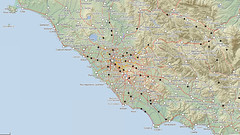 Sitting in your college classics lecture, did you ever wonder where, exactly, the ancient cities of Luna or Velathri were? Now, you can zoom around this huge, detailed map of the ancient world labeled with cities from all sorts of archaeological records, classical text references and European imagery.
Sitting in your college classics lecture, did you ever wonder where, exactly, the ancient cities of Luna or Velathri were? Now, you can zoom around this huge, detailed map of the ancient world labeled with cities from all sorts of archaeological records, classical text references and European imagery.
To read the complete article, see:
Zoom Around This Detailed Map of the Ancient World
(blogs.smithsonianmag.com/smartnews/2012/10/zoom-around
-this-detailed-map-of-the-ancient-world/)
Correction to the Kikokuniya Website Address
Joe Boling writes:
In Howard's review, "Kinoyuniya" should be "Kinokuniya" (in the web address, also). The Thai book is indeed available at the Thai branch of the Kikokuniya website, but not at the US branch.
To read the earlier E-Sylum article, see: BOOK REVIEW: SIAMESE COINS, FROM FUNAN TO THE FIFTH REIGN (www.coinbooks.org/esylum_v15n41a07.html)
MAMMOTH CATALOGING PROJECT OF MEDAL-OF-VALOR WINNERS
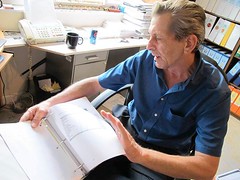 As a researcher for Medallic Art Company in the 1970s I wanted a reference book on the recipients of all the award medals the company had made over the years. There were a number of books, I learned, on all kinds of awards, which often listed award medals but not all listed their recipients.
As a researcher for Medallic Art Company in the 1970s I wanted a reference book on the recipients of all the award medals the company had made over the years. There were a number of books, I learned, on all kinds of awards, which often listed award medals but not all listed their recipients.
I realized, however, it was far more important, at least for the numismatic field, to have a list of the ARTISTS of all the medals the company made. This came about when I cataloged all the medals for the company archives. I recorded the name of designer, engraver, or sculptor-medallist who had created each medallic item and place this on a card file (subsequently entered on computer).. Years later, in retirement years, I had the time to amass this into a databank. I surmised at first there would probably be 800 or so such artists.
Today, 25 years later, that number of artists has reached 3,967 artists of American coins and medals. This is contain on 3,101 pages of an estimated 90.000 items. [These is some duplication as an item with more than one artists is entered under both artists.].
Imagine my amazement this week when I read an article on a Washington DC researcher who has created a databank of 115.000 names, the recipients of medals-of-valor awarded to military personnel. This is an astounding number! I know, in comparison to the amount of effort put forth for my databank.
For 14 years Doug Steiner has been dedicated to the task even the Pentagon has refused to do. He searches military archives for a record of one of the three top American decorations. when he finds a hit he photocopies the document and later enters the information in his massive databank.
At present he estimates his 115,000 names will eventually reach 350,000. He calls his databank a Hall of Valor.
In 2008 the publication Military Times purchased his databank and pays him a monthly fee to continue his searching. They have placed the file on their website.
Click on this URL to read the complete article written by David Zucchino and published in the Los Angeles Times: One man's heroic quest: Cataloging 350,000 medal-of-valor winners (articles.latimes.com/2012/oct/04/nation/la-na-medals-20121004)
ARTICLE PROFILES MINT DIRECTOR NOMINEE BIBIANA BOERIO
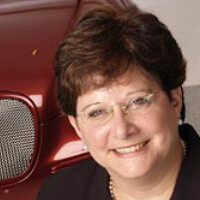 A former auto executive with a background in design has been nominated by President Obama to be the next director of the United States Mint, an agency of the Treasury Department. If confirmed by the Senate—which is unlikely to act before December—Bibiana Boerio would succeed Edmund Moy, who left the post in December 2010. Since Moy’s resignation, Deputy Director Richard A. Peterson has shouldered the responsibilities of the director.
A former auto executive with a background in design has been nominated by President Obama to be the next director of the United States Mint, an agency of the Treasury Department. If confirmed by the Senate—which is unlikely to act before December—Bibiana Boerio would succeed Edmund Moy, who left the post in December 2010. Since Moy’s resignation, Deputy Director Richard A. Peterson has shouldered the responsibilities of the director.
Born circa 1954 in Latrobe, Pennsylvania, Boerio graduated in 1971 from Greensburg Central Catholic High School in Greensburg, Pennsylvania. She earned a BS (Hons) in Textiles and Design at Seton Hill College in 1975 and an MBA in Accounting and Finance at the University of Pittsburgh Graduate School of Business in 1976.
Joining Ford Motor Company after graduating with her MBA, Boerio held a number of finance positions in the areas of product development, manufacturing, sales and corporate business planning, from 1976 to 1995. From August 1995 to September 2000, she served as the finance director for Jaguar Cars, Ltd., then a subsidiary of Ford. She also launched and served as the chair of Jaguar’s Women’s Product and Marketing Committee. Leaving Jaguar in 2000, Boerio worked as executive vice president, chief financial officer and treasurer of Ford Motor Credit Co., LLC, from October 2000 to March 2003, and as director of finance and strategy for Ford Motor Company International Operations from 2003 to 2004. She returned to Jaguar in July 2004 to work as managing director, leaving for good in December 2007, when Ford was in the process of selling its interest in the British car maker to Tata Motors, which is based in Mumbai, India.
Retiring from Ford, Boerio transferred to the political realm, serving as chief of staff for Congressman Joe Sestak (D-Pennsylvania) from February 2008 to January 2011. After Sestak left the House of Representatives in order to run, unsuccessfuly, for the Senate, Boerio was a special adviser to the Sandy Baruah, the president chief executive of the Detroit Regional Chamber of Commerce from March 2011 to February 2012, with an emphasis on developing the MICHauto association in support of the auto industry.
To read the complete article, see:
Director of the United States Mint: Who Is Bibiana Boerio?
(www.allgov.com/news/appointments-and-resignations/director
-of-the-united-states-mint-who-is-bibiana-boerio-121006?news=845873)
QUERY: HOW WAS THIS CENTENNIAL EXHIBITION AWARD MEDAL MADE?
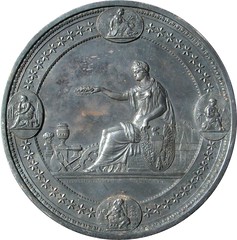

Recently, a white metal die trial of the prototype 4” Centennial Exhibition award medal was offered on eBay (item #330795138801). Though I could not afford even to bid, the consignor has graciously granted me permission to use his photos. I have attached images of the obverse and reverse. The pebbled appearance of the reverse prompted me to question the composition and structure of the medal.
Jonathan Brecher has theorized that it may have been the result of a process that starts with little pellets of metal, then melts and fuses them together. He provided photos of a token that appears to have been produced in this manner. I have attached them as well. (It was Jonathan who suggested this might be a good topic for The E-Sylum).
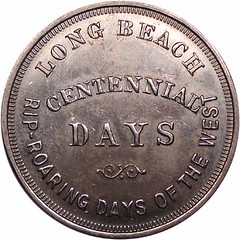


I would appreciate any information that your always astute members will be able to provide.
BROOKGREEN GARDENS FOUNDERS MEDAL

BROOKGREEN GARDENS FOUNDERS MEDAL, 1967. 76mm. Bronze. Carl P. Jennewein, Sc. (MACO-Danbury 1989 edgemark.) Obv: Busts of Archer M. Huntington and Anna Hyatt Huntington to the right, their names in two lines below. AMICI HVMANI GENERIS around at top. Rx: A view of Anna Hyatt Huntington’s monumental statue of two horses that is placed at the entrance to Brookgreen Gardens.
The sculpture gardens at Brookgreen in South Carolina are a must-see for anyone who appreciates realistic American sculpture. Some of the finest American sculpture is displayed in a garden setting that is absolutely breathtaking. Plan to take a full day for this and you won’t be disappointed. $175.00

To read more about Brookgreen Gardens, see: www.brookgreen.org
READER THOUGHTS ON DEMONETIZATION
Myron Xenos writes:
Interesting article on Canadian cents last week. HOWEVER, the word "demonetized" is a nasty word. If my memory is correct, America has never demonetized any of its currency or coin except the Trade Dollar which was not circulating in the U.S.. Although the cent is no big deal, demonetizing it will create much doubt as to the strength of our monetary system.
There was a letter to the editor of the Bank Note Reporter's last issue about using the dollar coin and "demonetizing" the paper dollar. Again, bad idea. All this country needs along with a 16 trillion dollar debt is to start having its currency and coin in question as to its value. When I fly somewhere, I take what foreign currency I have to the airport foreign currency conversion booth. I get half of it back as having been demonetized.
Our Dollar is in enough trouble without having some of it in question. Even paper money collectors will be shaken by the possibility that the 500 and 1000 dollar bills could be demonetized because "we don't use them anymore". Oh, by the way, does anyone want to buy a 100 trillion Zimbabwe dollar bill, or Greek drachma, or French franc, or Italian lire. Let us hang on to what little we have left knowing that what is "under the mattress" will be good when we need it, even if it becomes worth a little less every day.
Serge Pelletier writes:
I believe it was said, somewhere is the last E-Sylum, that the Canadian 1-cent had been demonetized. That is false.
Serge included a link to this page on the Royal Canadian Mint site: Eliminating the penny (www.mint.ca/store/mint/learn/eliminating-the-penny-6900002)
Joe Boling writes:
It's been fifteen years since Canada minted bronze cents - they have been copper-plated steel since 1997. So much for "it's excellent bronze -- to make a statue or a bell." I'll wager most of the bronze cents have already been pulled from circulation.
To read the earlier E-Sylum article, see: CANADIANS HAVING FUN WITH DEMONETIZED CENTS (www.coinbooks.org/esylum_v15n41a27.html)
X-RAY FLUORESCENCE SPECTROSCOPY FOR DETERMINING COIN COMPOSITION
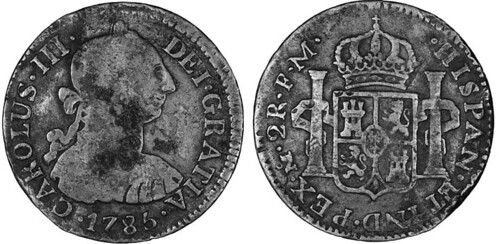
X-ray fluorescence spectroscopy (XRF) is a well-established analytical technique for the determination of the elemental composition of solid materials in bulk or thin film form. Its speed, reliability and accuracy make it extremely useful for determining the composition of coins from a surface analysis perspective.
In XRF a sample is irradiated by an X-ray beam, which results in ejection of inner shell electrons from the sample atoms. Outer shell electrons take their place and the difference in energy level results in the emission of X-rays (secondary radiation). The wavelength of these X-rays is characteristic for each element present, and the intensity of the emission is related to the concentrations of the elements. The accuracy of metal compositions can be taken down to 0.001%. The penetration of the X-ray into the coin depends on the alloy composition with gold its ~10 micrometers (um) and for copper and silver its higher around 50-100 um.
Currently I have used it in research on the composition of contemporary counterfeit Portrait 8 Reales which is a book currently being written for the American Numismatic Society which is planned for 2013/2014 and William Anton's Anniversary (20th) Forgotten Book. The study of Canadian Blacksmith Tokens and Kleeberg Contemporary Counterfeit 2 Reales, World Contemporary Counterfeits, Off-Metal Errors and other series have been currently looked at to help explain questions on compositions and possible origins of these issues.
I am offering a service for people doing research on coins and my fees are minimal as the important thing is to get good data out to projects currently in progress to better help and understand some of the questions we have studying coins of questionable origins and/or production methods.
Any person undertaking a research project can contact me at johnmenc@optonline.net with the details of their project and coins. People are welcome to see a current project recently done for Mike Diamond in Coin World in the October 15 issue of Collectors Clearinghouse on the 1941 brassy cent in which its mystery has been now unraveled with the help of XRF analysis.
QUERY: HAS ANYONE SEEN THIS LIBERTY HEAD DESIGN?
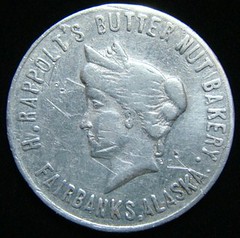
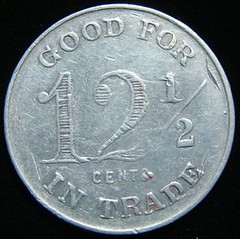
Dick Hanscom writes:
A Fairbanks, Alaska token has popped up on eBay. It is unlike any other Alaska token. Does anyone know of a similar token with the Liberty Head design from another state?
To read the complete eBay description, see:
Fairbanks Alaska H. Rappolts Butter Nut Bakery Good For 12 1/2 Cts Trade Token
(www.ebay.com/itm/300788877731?ssPageName=STRK:MEWAX:IT
&_trksid=p3984.m1438.l2649)
QUERY: COUNTERMARKED 1791 WASHINGTON CENT IN HARZFELD'S SIXTH SALE
Joel Orosz writes:
I am hoping that someone out there has a priced and named copy of S.K. Harzfeld's sixth sale, September 11-12, 1879. I am particularly interested in lot 308, so any information about who may have consigned it, and who bought it, would be greatly appreciated. It is a countermarked 1791 Washington lettered edge large eagle cent. Please send any information to Joel J. Orosz, at Joeljorosz@gmail.com. Thanks very much!
THE WINICK COLLECTION OF MECHANICAL BANKS
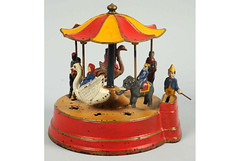 Several major collections anchored the three-day sale, which realized $2.76 million, inclusive of 20% buyer’s premium. The Al Winick collection of 100 fine mechanical banks was described by Morphy as “the best mechanical bank collection to come to auction since the world-record Steckbeck sale of 2007.” More than 100 bidders turned out to bid in person during the bank portion of the event.
Several major collections anchored the three-day sale, which realized $2.76 million, inclusive of 20% buyer’s premium. The Al Winick collection of 100 fine mechanical banks was described by Morphy as “the best mechanical bank collection to come to auction since the world-record Steckbeck sale of 2007.” More than 100 bidders turned out to bid in person during the bank portion of the event.
The Winick banks certainly lived up to Morphy’s assessment, with a rare blue variant of Kyser & Rex’s circa-1886 “Mikado” mechanical bank claiming top-lot honors at $198,000. A beautiful example in near-mint condition, the cast-iron depiction of a magician performing a sleight-of-hand shell game trick had been estimated at $100,000-$150,000.
With crossover appeal to black Americana collectors, an 1880 “Freedman’s Bank” was in enviable near-mint condition and came with provenance from both the Tudor and Steckbeck collections. It cashed out at $138,000, comfortably within its $125,000-$150,000 estimate range.
Other Kyser & Rex cast-iron mechanical banks that finished in the top 10 included a Merry-Go-Round, ex Steckbeck collection, $126,000; and Roller Skating bank depicting an old-fashioned skating rink with skaters, $84,000. Also finishing well in the money were two desirable productions by J. & E. Stevens: a football-theme Calamity bank in superb condition, $38,400; and an 1880 Chimpanzee bank, $37,200.
To read the complete article, see: Mechanical banks of fine pedigree dominate Morphy's $2.76M auction of toys, dolls, sports memorabilia (www.artdaily.org/index.asp?int_sec=2&int_new=58065#.UHBkvE3A8dc)
THE BOOK BAZARRE
BONNIE AND CLYDE MORGAN DOLLAR BRINGS $32,400
 Two pistols found on the bodies of famed Depression-era outlaws Bonnie Parker and Clyde Barrow after they were killed by a posse in 1934 have sold at auction on Sunday for $504,000.
Two pistols found on the bodies of famed Depression-era outlaws Bonnie Parker and Clyde Barrow after they were killed by a posse in 1934 have sold at auction on Sunday for $504,000.
A snub-nosed .38 special found taped to the inside of Parker's thigh with white medical tape fetched $264,000 at an auction in Nashua, New Hampshire. A Colt .45 recovered from the waistband of Barrow's pants was purchased for $240,000.
The guns owned by Parker, who died at age 23, and Barrow, who was 25, were purchased by a Texas collector who wished to remain anonymous.
"They're still iconic and their love story kind of resonates," said Bobby Livingston, vice president of RR Auction, the company that conducted the sale. "We have a romanticized vision of Bonnie and Clyde."
The hunt for the outlaw lovers captured the nation's imagination during the depths of the Great Depression. The duo were believed to have committed 13 murders and numerous bank robberies, kidnappings and car thefts during a cross-country crime spree from 1932 to 1934. Their fame was heightened by their practice of leaving glamorous photos of themselves at crime scenes, including one of Parker smoking a cigar.
A gold pocket watch found on Barrow's body sold for $36,000. Other items included a 1921 Morgan silver dollar taken from Barrow's jacket fetched $32,400, and one of Parker's silk stockings, taken from the couple's car after their death, which went for $11,400.
To read the complete article, see: Bonnie, Clyde guns stay together after high bidder pays $500,000 (www.reuters.com/article/2012/09/30/us-bonnieandclyde-idUSBRE88T0LI20120930)
ALASKA NATIONAL BANK NOTE MAKES HEADLINES
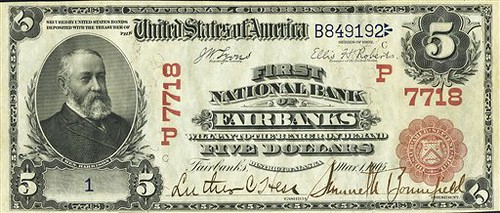
Dick Hanscom writes:
The Bairflanks Daily-Newsless Miner had an article about the $5 First National Bank of Fairbanks note in Heritage’s auction.
The $5 bill displayed for decades on Charles Fairbanks IV's wall was long a treasured family heirloom from Alaska. Now, to the surprise of the grandson of a turn-of-a-century vice president, it's also become a likely treasure trove.
The rare find is expected to fetch as much as $300,000 at auction this month when a Texas auctioneer plans to put it up for bids in Dallas and online as part of the American Numismatic Association National Money Show.
The bill was presented in 1905 to Vice President Charles W. Fairbanks — Theodore Roosevelt's No. 2 — and was from the First National Bank of Fairbanks, Alaska. The family has had it in their possession ever since and recently decided to auction it off through Dallas-based Heritage Auctions.
"It's a wonderful, wonderful find," said Dustin Johnston, director of Heritage's currency auctions.
Auction officials say the Fairbanks bill that features an image of President Benjamin Harrison is a highlight that's expected to sell for $200,000 to $300,000. The minimum starting bid is $120,000.
Fairbanks always knew the bill was special, at least to his family, given that it was presented to the former vice president as a memento from the frontier city named after him.
Charles W. Fairbanks was a U.S. senator from Indiana in the late 1890s when he was credited with playing a key role to resolve a border dispute with Canada triggered by the Klondike Gold Rush. As a result of his efforts, most of the disputed territory went to the United States.
But the real reason the city of Fairbanks was named after him was because he played a key role in the appointment of a federal judge, James Wickersham, a man Fairbanks met during the border dispute, according to University of Alaska Fairbanks historian Terrence Cole. To return the favor, Wickersham urged city founders to call the settlement Fairbanks.
Auction officials also note the bill's rarity. Only three banks in Alaska — out of more than 12,000 banks nationwide — issued the bills.
To read the complete article, see:
Rare century-old $5 Alaska bill could be worth $300,000
(www.newsminer.com/view/full_story/20348742/article-Rare
-century-old--5-Alaska-bill-to-be-auctioned)
ARTICLE ON THE FAIRBANKS LOCKSMITH NATIONAL BANK NOTE THEFTS
Regarding the above article on the Charles W. Fairbanks $5 National Bank Note, Dick Hanscom writes:
That story did not appear in the "in print" edition, only on line. They did a related story that made Friday's paper. The information I have is that the thief is not in prison, but under three years house arrest. So, let's see....there had not been an inventory, so no one really knows what else might be missing....
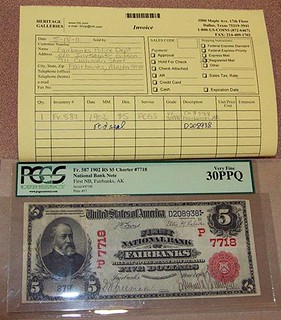 A Dallas auction house selling a rare century-old $5 bill from Fairbanks this month was duped in a separate, unrelated deal last year with a Fairbanks locksmith who sold the company historical bank notes he stole from the estate of a collector.
A Dallas auction house selling a rare century-old $5 bill from Fairbanks this month was duped in a separate, unrelated deal last year with a Fairbanks locksmith who sold the company historical bank notes he stole from the estate of a collector.
Fairbanks police say Heritage Auctions pulled the bills from sale after learning it received stolen property from Forrest Holton, who is serving a three-year prison sentence after pleading guilty to felony theft.
The theft remained undiscovered for months and came to light when estate representatives learned some of the bills were listed for auction in April 2011.
"They thought they had the darn things," Fairbanks police investigator Jim Gibson said.
In his approach to Heritage, Holton claimed he found the bills in a desk kept at an abandoned storage facility that he bought in a foreclosure sale, a transaction that never happened. Holton actually gained access to the bills several times after changing out the locks of four safety deposit boxes belonging to the estate of pioneer Fairbanks banker Bill Stroecker, whose collection included First National Bank of Fairbanks notes signed by his father, who preceded him as bank president.
Altogether, Holton stole about 60 bills, including two uncut sheets of bank notes, said Gibson, who was assigned to the case. The value of the loot was estimated as high as $500,000, the bulk of it from the uncut sheets and the 10 bills Heritage bought for $82,000.
To read the complete article, see:
Auctioneer with rare Fairbanks $5 bill duped in other case
(newsminer.com/view/full_story/20368497/article-Auctioneer-with
-rare-Fairbanks--5-bill-duped-in-other-case-)
GEORGE III COPPERS WASHING UP ON DELAWARE'S MONEY BEACH
“A most melancholy catastrophe,” the Pennsylvania Packet reported in 1785, “occurred on Thursday the 1st instant, near the capes of Delaware. The ship Faithful Steward, (Capt.) McCausland, from Londonderry, bound to this port, with 240 passengers on board, standing into the Bay, unfortunately ran on a shoal to the southward of Cape Henlopen, about 150 yards from dry land. The captain, and some others, got ashore, but the surge being very violent, the boats were unable to return to the ship, which lay till the next day, and then beat to pieces.”
The wreck of the Faithful Steward on Sept. 1, 1785, was the greatest disaster to have occurred on the Delaware coast. Out of about 260 people aboard, about 70 survived. In addition to its human cargo, the Faithful Steward carried a shipment of copper pennies that were spilled into the ocean when the ship foundered.
After the Faithful Steward disaster, the ship’s cargo of coins were scattered by the constant movement of the ocean waves. Occasionally, some of these pennies were cast onto the sand; but so few people visited the Delaware coast at the time, the sand covered up the pennies before anyone noticed.
On Feb. 24, 1937, the New York Times reported, “Copper coins issued under the reign of George III of Great Britain, and bearing dates from 1774 to 1782 were picked up along the oceanfront today near Indian River Inlet, just south of Lewes. Youths from the Lewes CCC camp discovered several hundred coins lying on the beach.”
On Sept. 1, 1939, the New York Times reported, “Daybreak yesterday found scores of persons at this resort’s ‘money beach’ five miles south of the ocean front near the Indian River Inlet in search of copper pieces, minted nearly two centuries ago in the reigns of King George II and III of England … Two Philadelphia matrons on Monday found nineteen coins. Mrs. Harry Fehr of Whitemarsh located 39, where her sister, Mrs. John W. Watson of Chestnut Hill, added 44.”
Although nearly three-quarters of a century have passed since these vacationers discovered a small portion of the Faithful Steward’s cargo, alert beachcombers visit the area north of the Indian River Inlet after strong storms or unusual tides in the hope of spotting a coin from the Delaware coast’s most disastrous shipwreck.
To read the complete article, see:
Sussex Journal: 'Money beach' still lures coin hunters
(www.delmarvanow.com/viewart/20121002/DW08/310020019/
Sussex-Journal-Money-beach-still-lures-coin-hunters)
HOWARD DANIEL'S NUMISMATIC DIARY: OCTOBER 7, 2012
My wife and I flew out of Dulles International Airport at 8AM on Wednesday on United Airlines with Economy Plus tickets. It was a smooth flight to San Francisco International Airport and it was a nice surprise that we did not have to go through TSA again when walking from the Domestic to the International Terminal. We found out we had been upgraded to First Class and our new ticket gave us access to the First Class Lounge. It pays to be a very loyal customer of one airline! I caught up with all of my emails and also made some telephone calls. The First Class on the Boeing 747 was VERY nice, and I got a lot of work done on my computer with the 110V outlet to keep me powered up.
I have learned to put everything in my computer bag when going through Hong Kong security. That includes my belt, coins, watch, ring and wallet. It really confused the poor lady with the wand trying to find something on me and to give me derogatory comments about forgetting something. I could see the man on the x-ray machine looking at my computer bag and commenting to someone next to him. I do not like Hong Kong security and have had several problems with them.
Phung and I found a young American man waiting for our flight to Ho Chi Minh (Saigon) who teaches English and how to take a SAT for Vietnamese high school students wanting to go to colleges and universities in the USA. I gave him my card and he will contact me to teach one of our nieces who my wife wants to attend George Mason University in Virginia. He is also a writer for a magazine in Viet Nam and will interview me about my numismatic adventures. I will definitely put in a plug for Viet Nam to have a national numismatic society.
We arrived at midnight to a crowd of relatives and we talked in our house until 3AM. I pushed myself out of bed at around 7AM to force myself into the new time zone. There was a small stack of Viet Nam News newspapers waiting for me in my home office. One item had a new import/export circular about to be implemented. Everyone carrying gold bullion bars in and out of the country will need a permit from the local branch of the State Bank. I collect the gold bullion bars of Viet Nam so I will see if I can acquire a permit. This will likely drive up the price for collectors because fewer will be outside of Viet Nam for them.
A second item was about counterfeit 200,000 Dong polymer notes being found in circulation. The counterfeits can be easily torn while the authentic are almost impossible to tear. They are also not printed with Optically Variable Ink (OVI) which displays two distinct colors when looked at from different angles. The transparent window also does not have the almost hidden image in it, and the block letters and serial number ink does not have a luminescence appearance. The State Bank also announced that the old 10,000 and 20,000 Dong paper (not polymer) notes will no longer be legal tender on January 1, 2013.
I will send in more numismatic information as I find it here in Viet Nam and Southeast Asia.
MORE ON THE HO HI WHANG TOKEN MYSTERY
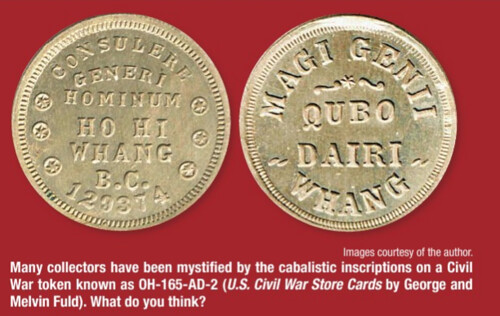
Regarding the Ho Hi Whang civil war token. To a collector of Chinese coins and tokens, Ho Hi Whang is clearly a Chinese name. I had seen a reference to this piece years ago, and filed it in my Chinese-American tokens file, but never looked into it till now. I have some doubts as to whether it was really made during the civil war, but it does appear as a single lot in an 1877 Woodward sale, so it was made before 1877 and was well known by that time.
It appeared to me to be a magician's piece, designed to be mysterious. The word "dairi" has two meanings that I could find. First, it refers to the part of the Imperial Palace in Japan in which the emperor lives, and by extension, is a reference to the emperor. The other meaning is as another name for the dahu -- a kind of goat in European mythology; that is, something which doesn't really exist. The word "Qubo" is a mystery. It is not Chinese or Japanese, and I have no idea what it means.
In the Stacks Eliasberg & Krause sale of 3/2/2010, Lot 199 was one of these tokens. The beginning of the description notes that the main inscription is Latin, and in fact a quote from a work by Cicero. They don't say what it means, and the rest of the description on the lot is nonsense. An online translation of the phrase reads "consultation among mankind". But to understand what that means, someone will have to read the full text.
Despite a whole shelf of books on Chinese mythology, I could find no reference to Ho Hi Whang or anything similar. The phrase is not in standard romanization, which would be "Ho (or Hou) Hsi Wang (or Huang). It might be a confused reference to Hsi Wang Mu, the Queen Mother of the West, a figure in Chinese mythology, who created the world with Mu Kung, and was the head of a troop of genii living at Kunlun. Her surname was Hou, so someone unfamiliar with Chinese names, might have called her Hou Hsi Wang (Ho Hi Whang).
Following another possibility -- that Ho Hi Whang was the name of a magician in the 1860's or 1870's -- I did an online search of newspapers from 1863 through 1876 in Ohio, New York, Pennsylvania, Michigan, Wisconsin, Massachusetts and Maryland. I found nothing on "whang" except the term "whang-doodle." In the 1870's this appeared to be a political term, though I am unclear what it refers to (no doubt, something bad). In 1868, however, the term was used for Chinese workers on the railroad in Oregon.
The end result is, we now have a lot of information, but it doesn't tell us much about the token. I don't see any indication that this is a satirical token aimed at coin collectors, unless the quotation from Cicero somehow conveys this meaning. However, the "date" on the token might be a bit of satire. Prior to the 20th century, Chinese numismatic works attributed specific coins, illustrated in catalogs, to rulers who are clearly mythical, and who lived in prehistoric times -- before metallurgy was discovered in China. Europeans were skeptical of these early dates (before 2000 BC), as they should have been. So the outrageous date 129374 B.C. might be a dig at Chinese numismatics in those days
To read the earlier E-Sylum article, see: AN INTRIGUING U.S. CIVIL WAR TOKEN: OH-165-AD-2 (www.coinbooks.org/esylum_v15n41a26.html)
FEATURED WEB SITE: ORIENTAL NUMISMATIC SOCIETY
This week's Featured Web Site is the Oriental Numismatic Society. Joe Cribb, the Society's Secretary General writes:The Oriental Numismatic Society has now launched its new website and the society is also active on Facebook: www.facebook.com/OrientalNumismaticSociety .
The Oriental Numismatic Society is a world-wide network of those interested in oriental coins and money (collectors, scholars, and enthusiasts).
The society publishes the Journal of The Oriental Numismatic Society (JONS formerly Newsletter) an international journal which is released quarterly to all members.
The different branches of the society hold meetings around the world at which members can meet and hear talks by collectors, scholars and enthusiasts working on a variety of numismatic topics.
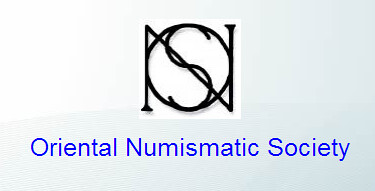
orientalnumismaticsociety.org
Back to top